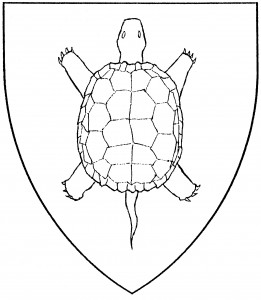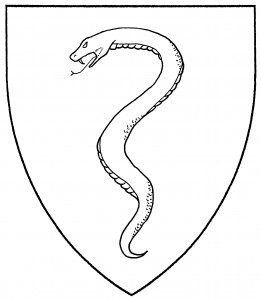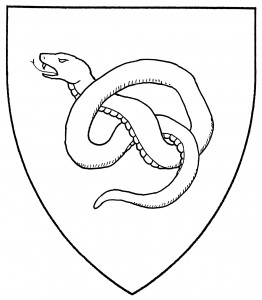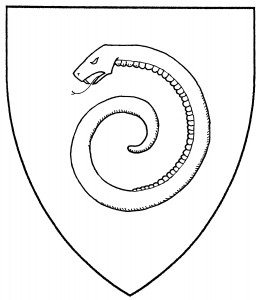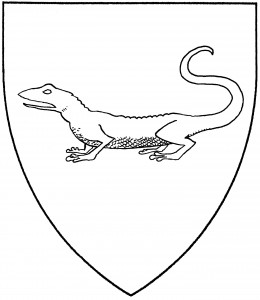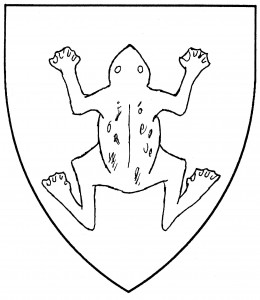The tortoise is a slow-paced, armor-shelled reptile. It may also be blazoned a “terrapin”; it has sometimes been blazoned as a “turtle” in the Society, though the term is modern for the reptile (it referred in period to a type of dove). While the terms are zoologically distinct, they are heraldically synonymous. The tortoise is a period charge, found in the arms of Esslinger, 1605 [Siebmacher 51].
Society armory also has examples of the “natural sea-tortoise (or turtle)”, which differs from the tortoise by having flippered feet. It shares the same defaults as the tortoise, and is considered an artistic variant only. However, pending period evidence, the natural sea-tortoise may only be tergiant (or a rotation thereof) in Society armory.
The tortoise is tergiant fesswise by English default, and tergiant palewise by Continental default; Society practice follows the Continental default. The use of a tortoise rampant is deemed a step from period practice. The natural sea-tortoise may only be tergiant in Society armory, pending documentation of other postures.
Geoffrey Maynard of York bears: Per fess engrailed Or and azure, in chief a tortoise tergiant vert.
Aoife inghean Eoghain bears: Argent, three tortoises azure.
William de Grey bears: Vert, three natural sea-turtles Or.
